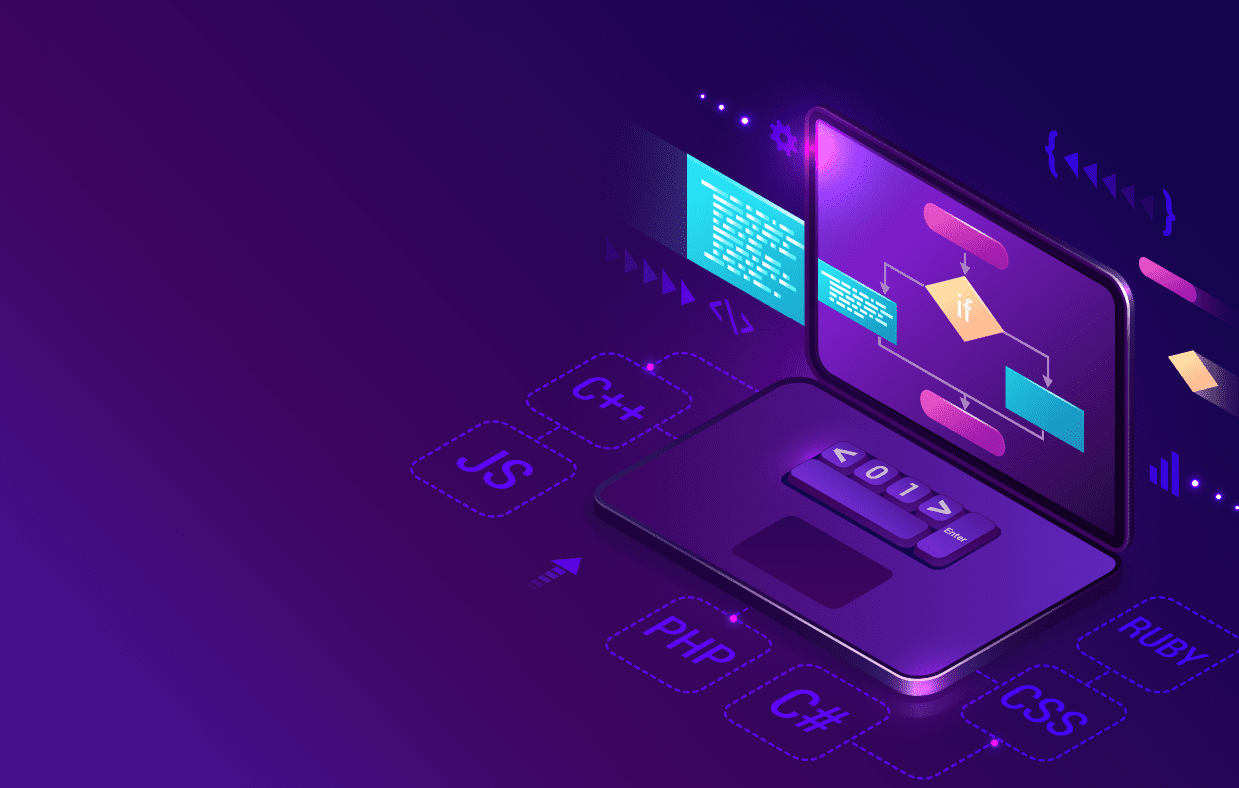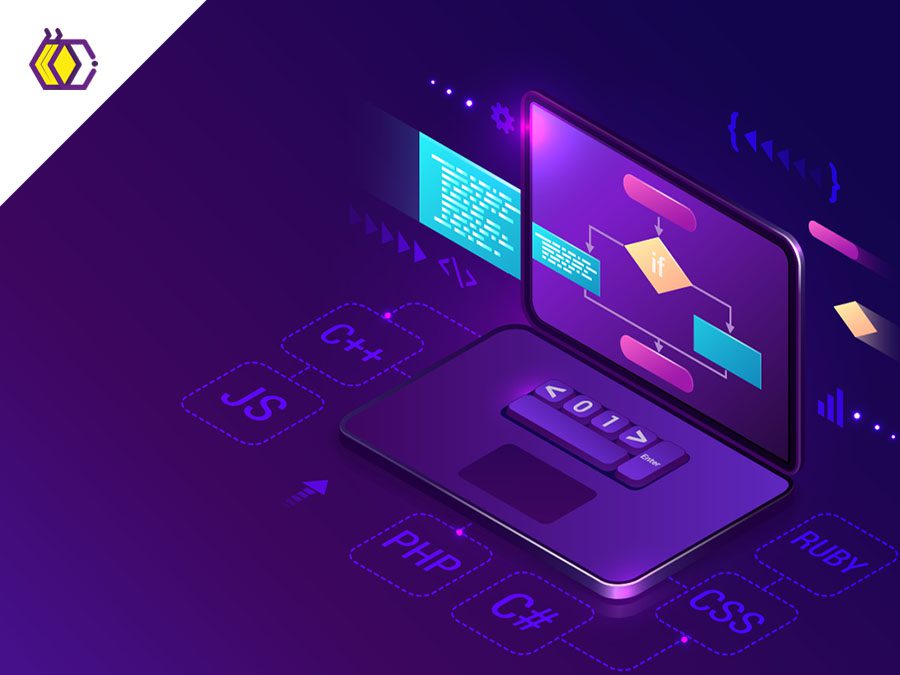

Coding Best Practices
(8 minutes of reading time)
A programmer’s life isn’t easy. Technology is something that never stops evolving and every day a different way of writing code appears. Therefore, a programmer must always be updated and attentive to new languages.
The code produced by a professional is his responsibility, therefore, a programmer must keep in mind that, when programming, he must always develop a “clean code”.
Good code is not just one that is functional, but also one that doesn't require unnecessary maintenance effort. Most programmers don't like to change poorly written code. This is something that brings a lot of frustration and often unnecessary rework. That's why good programming practices are so important.
But then, what are good programming practices? They are a set of conventions to be able to make the code readable for both computers and humans, with the objective that maintenance and improvements can occur easily. Here in this text, you will find some tips to improve your good coding practices.
WRITING A GOOD CODE
A clean code should be:
1) Simple and easy to understand
2) Direct, without going around to reach your goal
3) Efficient and that does what is expected
4) Without duplication of what another piece of code already does
5) Elegantly written
6) Made with care because whoever made it was concerned about producing that code
To be able to develop a clean code you need to follow these steps:
USE MEANINGFUL NAMES
Your code/method should have names that have some meaning in relation to their purpose and these names should answer the following questions:
- Why do they exist?
- What are you doing?
- How are they used?
Let's imagine that a car engine system has a method called “run” instead of “accelerate”. If you get a code with that “run” name you will have to study the whole method to know what it does.
INDENTATION
Indentation means the way used to visually organize program blocks with indentations (made with tabs or spaces).
With indentation, the code gets cleaner, more readable and organized, but it doesn't just serve to make the code more fluid. There are languages ,like Python and Haskell, that need indentation to define the hierarchy of code blocks, replacing markers like curly braces, { }, or words (begin/end, for example).
MODULARIZATION
If a code or a function takes up more than one screen space, it might be a good idea to modularize it.
Dividing the code into smaller functions and methods, organized into libraries, classes or packages (depending on the language), makes the code shorter, more organized and, above all, favors its reusability.
FORMATTING
The code formatting is important because it is part of code communication. Nobody would like to receive an encrypted letter where they must interpret what is written on it, the same happens when writing a code.
Another important aspect is that if you get well-structured code, you're going to have the motivation to keep it well-structured. It is bad for any developer to have access to unformatted code, without indentation and to have to read it as if it were text without any punctuation.
Methods with related concepts should be vertically close together and the order of the methods should create a reading flow that improves code readability.
COMMENTS
A code, possibly, will not just be in your hands. And even if that happens, after a while without touching it, you're likely to forget some detail to get the expected result.
To avoid this, it is important to use comments. Of course, there's no need to exaggerate the type of comment line by line, as obvious and excessive comments also hinder the flow of the code.
Comments should be used to briefly explain what your algorithm commands do. They also serve as a guide for a quick understanding of the program, making it easier to read the code.
Remember that comments only appear for programmer. Think about that when writing them.
DOCUMENTATION
It is essential to document your work, describing the code specifications, because it is from the analysis of this documentation that anyone can understand how your program works, even if they do not have access to the source code.
CLARITY
Your coding style should be clear and simple. For example, choose meaningful names for your variables and functions, make small functions that perform a well-defined task, avoid using global variables, modularize your code, and establish clear interfaces between modules. So, whoever reads your code will have no difficulty understanding what each snippet does.
STANDARDIZATION
There are some documents that suggest coding standards for each of the languages.
Standardization is a good practice you should adopt when working alone, and it's even more important when participating in a group project.
AVOID HUNGARIAN NOTATION
Hungarian notation is intended to facilitate recognition of the type of a variable in a program by placing a suffix describing its type in its name. However, with the advent of new languages and automated tests, Hungarian notation becomes unnecessary.
HANDLING ERRORS AND EXCEPTIONS
Don't assume that the user will always provide the data perfectly or that the machine will never encounter exceptions. You need to analyze error and exception conditions, predicting them in the implementation of your code.
Error handling is the responsibility of the developer. It is necessary to guarantee that the code will have a treatment for each situation. Prefer to throw an exception instead of returning an error code. These returns clutter the method call and you can easily forget to check them.
Inside your method you can already see the error being returned and handle it right there. Define method flow separating business rules from errors or other situations. For your errors, create informational messages mentioning the operation that failed and the type of failure.
Try to use exceptions for unexpected situations, for example: your code is reading a file and the network became unavailable.
TABLE TEST
Table testing is a simple technique for testing your code and allows you to assess whether your program has any errors of logic. It works like this: you follow the flow of instructions and write down on a piece of paper, on your table (hence the name), the values of the variables.
With this test you can avoid several errors in your program.
OTHER TESTS
Testing your program is essential, because there is no point in writing code and not testing how it works. You can start by running it through a battery of tests to get an idea of how it behaves with different types of input.
BACKUP
Nothing in this world that involves computing can be done without backup. There are several ways to save your work. Today, a good example is the source code hosting platforms, such as Github and Gitlab, which do, by the way, version control of projects.
Never forget to have a backup!
It is important to consider that code is the way a team of developers will communicate. So, it must be very organized, explained, clear and well structured, only then will the result of the product be what the customer expects.
Do you like our content? So, follow us on social media to stay on top of innovation and read our blog.
References:
https://bit.ly/3r9MnkA
https://bit.ly/3nlNCfk
https://bit.ly/3rbRErR
Share this article on your social networks:
Rate this article:
[yasr_visitor_votes size=”medium”]



